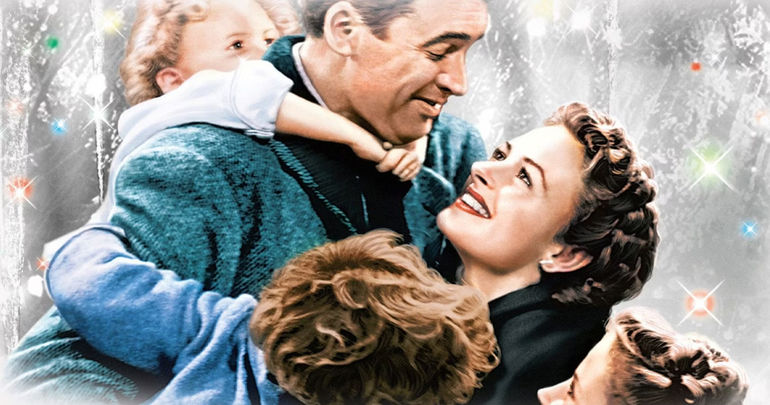
The Colorful History of It's a Wonderful Life

Exploring the journey of It's a Wonderful Life from black and white to color and the controversies surrounding it.
The Classic Black and White vs. the Colorized Version
The classic version of It's a Wonderful Life is in black and white since that medium was the norm when the movie premiered in 1946. However, once colored pictures became easier to produce and more popular, the Christmas film was re-released in color. Now, audiences have the option of viewing the movie in black and white or in color. Most airings of It's a Wonderful Life typically stick to the original version of the holiday classic, though.
The Classic Black and White vs. the Colorized Version
The cast of It's a Wonderful Life included James 'Jimmy' Stewart as George Bailey, Donna Reed as Mary Hatch Bailey, Lionel Barrymore as Henry Potter, Thomas Mitchell as Uncle Billy, Henry Travers as Clarence Odbody, Beulah Bondi as Mrs. Bailey, Gloria Grahame as Violet Bick, Frank Albertson as Sam Wainwright, and Todd Karns as Harry Bailey. In the years following its release, the 1946 film has been lauded not only as one of the best Christmas movies ever but also as one of the best films of all time. So, it was not surprising that production studios wanted to capitalize on its success by re-releasing it in color.
George Bailey is drunk in It's A Wonderful Life
The Director's Decision to Colorize It's a Wonderful Life
Hal Roach Studios released the first colorized version of It's a Wonderful Life in 1986, 40 years after it premiered on December 20, 1946, and it was partly thanks to Frank Capra. Capra directed the Christmas classic and later decided that the movie should be re-released in color after the 1937 film Topper, starring Cary Grant, saw success when it was colorized.
It was a way for older movies to gain traction years after they premiered, and it was undoubtedly a strategy that paid off dividends for studios that wanted a cash grab. However, some were unhappy with It's a Wonderful Life being colorized and felt it changed the meaning of the film.
The Controversy Surrounding Colorization and Public Domain
Unfortunately, a clerical error led to It's a Wonderful Life prematurely entering the public domain in the 1970s. As a result, multiple studios could re-release the 1946 Christmas movie in color. Hal Roach Studios was the first to do it in 1986, followed by Republic Pictures in 1989 and Legend Films in 2007, according to Good Housekeeping.
Even though director Frank Capra was initially on board with the colorization of his film, once it entered the public domain, he had less control over the business movie. So, some controversy arose after It's a Wonderful Life was re-released in color because other studios took advantage of it entering the public domain. However, it was also controversial because some fans preferred the black-and-white version over the colorized one and were upset that it was colorized in the first place.










